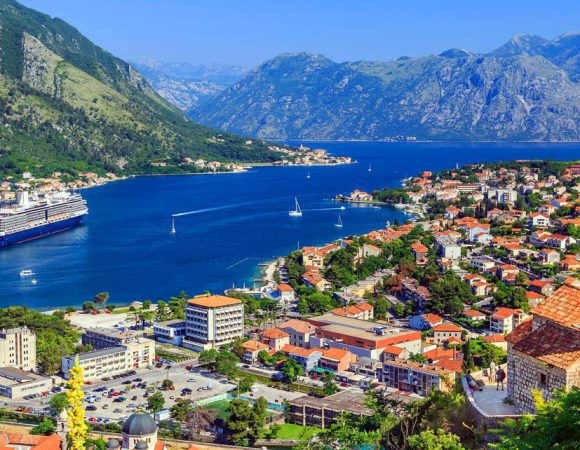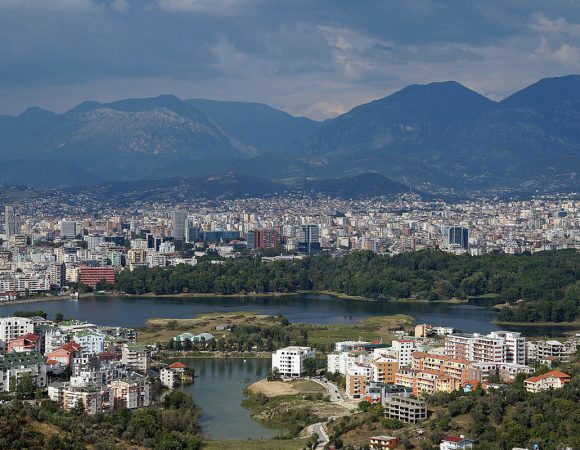
Bosnia and Herzegovina
Bosnia and Herzegovina, with an area of 51,197 square kilometers, is divided into three ethnic groups: Bosnians, Serbs and Croats. In addition to this, the country is also divided into two as Bosnian and Herzegovinian. Bosnia is the northern region of the country. Herzegovina is the southern region of the country. While the population of the country was 4,354,911 in the census made in 1991, it is said that this number decreased to 3,800,000 people in the census conducted in 2013, due to the increasing immigration rate in the last 22 years and the losses in the wars.
Bosnia and Herzegovina is a country that has just begun to recover from the effects of communism. The effects of the war in the cities are not erased, the bullet marks on the walls are still there, so that the newly born and young people do not forget their history. The ‘ Eternal Fire Monument’ , symbolizing the Second World War in the capital Sarajevo , surrounded by the Milijacka River , burning day and night ; Tunnel of Hope built during the civil war ; The Latin Bridge , where the first traces of the First World War are located ; The Viyeçnitsa Library , which was restored and reopened to the public after it was burned by the Serbian nationalists in the civil war in 1992, and has the country’s most important national archive ; Neratva RiverMostar Bridge, which is located on the UNESCO World Heritage List ; Inat Kuca Evi, which symbolizes the stubbornness of the Bosnian people since 1895, has become a national symbol and has been serving as a restaurant since 1997 ; the coastal city of Neum ; Kravitse Waterfalls are must-see places in Bosnia and Herzegovina.
The influence of Bosnia-Herzegovina, a country that hosts different nationalities, on Balkan music, which is called the most exotic and homogeneous music of Europe, is undeniable. World-famous musician Goran Bregović is an artist who grew up in these lands.
Capital, Cities and Regions of Bosnia and Herzegovina
The capital of Bosnia and Herzegovina is Sarajevo . Other important cities known outside Sarajevo are Mostar, Banja Luka, Trebinje, Bihac, Neum, Travnik, Medjurgorje, Tuzla, Srebrenica and Prijedor, which are famous for its bridge .
Where is Bosnia and Herzegovina?
Located in Southeast Europe, Bosnia and Herzegovina is surrounded by Croatia to the north and west , Serbia to the east , and Montenegro to the south. It has a 20 km coast to the Adriatic Sea in its southern region . Located in the southeast of the European continent, the east of the Italian Peninsula, the west and northwest of Anatolia; It is one of the Balkan countries.
When to go to Bosnia and Herzegovina?
Bosnia and Herzegovina is a country that experiences all four seasons. However, you may encounter a chilling cold in the winter months and a sweaty heat in the summer months. Therefore, for a more spacious and comfortable trip, it is recommended to go to Bosnia and Herzegovina in the autumn or spring seasons.
The ski season shows itself between January and March. In these months, especially Bjelasnica , Igman and Jahorina mountains are very suitable for skiing.
In the Banja Luka Summer Games held in Banja Luka in August, theaters, poetry nights and concerts are organized with the participation of visitors and artists from different countries.
Bosnia and Herzegovina Culture
Bosnians (46.1%) Serbs (37.9%) Croats (14.6%) make up the different ethnic groups and cultures of Bosnia and Herzegovina. This situation has also provided diversity in the social and cultural field. Bosnians are very attached to their culture and traditions and have their own characteristics. For example, they do not drink coffee without Turkish delight, they take sugar cubes on their way to guests, the accordion is indispensable for them and they are famous for their stubbornness. Serbs are known for their more introverted features than Bosnians, they do not go out much, they are at the forefront with their nationalism.
Especially in Sarajevo and Mostar, traces of the Ottoman Empire are more common. Bosnia and Herzegovina attracts travelers with places of worship of different religions, such as the Old Orthodox Church , Gazi Hüsrev Bey Mosque , the Bosnia – Herzegovina Jewish Museum , which is also a synagogue, and the Sarajevo Catholic Cathedral .
Bosnia and Herzegovina Cuisine
The fact that it is a country that blends Byzantine, Ottoman and Western European influences has also made a great contribution to the culinary culture of Bosnia and Herzegovina.
Response , which is Sarajevo-style meatballs, Pita , a Bosnian Pastry, Klepe reminiscent of Italian ravoli , Bey Soup , a local delicacy, Bosanski Lonac , which consists of meat made by adding white wine and different vegetables, are among the prominent tastes of Bosnia-Herzegovina cuisine.
Gifts from Bosnia and Herzegovina
Buying something unique to the place you are going to will always keep the memories you have about that country alive. When you go to Sarajevo, you can go to Bascarsija for shopping and watch copper and silver work here; You may have the opportunity to purchase later. Telali Market for food shopping ; You can choose Sirano Bazaar for varieties such as clothes and music products . Ciglane Bazaar , also located in Sarajevo, is the city’s largest market where you can find everything from second-hand products to clothing, from clothing to food products .
If you are in Mostar, you can go to the Old Market and stop by tailors, shoemakers, jewelers, copper and silversmiths; Check out the shopping options.
Bosnian Coffee , cross- stitch, wooden spoons are also options you can buy specific to Bosnia and Herzegovina culture.
Festivals of Bosnia and Herzegovina
Festival times for Bosnia and Herzegovina, which has a great influence on the coexistence of its different peoples, are also very diverse and developed. The main festivals of the country, which offer different festival flavors to its citizens and tourists with theatre, music, cinema, children’s and traditional festivals, are as follows:
· The Sarajevo Film Festival, which started in 1995 as a reaction to the war in Bosnia and Herzegovina , is considered the leading festival of the country . It is held between July and August.
The Sarajevo Jazz Festival , an international festival that has been held since 1997, brings together artists from different nationalities in November every year, as well as opens a door to new talents.
· At the Children’s Festival , which has been organized since 2004 and attended by approximately 40 thousand children from all over Bosnia and Herzegovina , workshops, games, dance performances and many other activities are organized with a focus on entertainment and education. The festival is known as the most comprehensive children’s festival in Southeast Europe.
· Banja Luka Summer Games held in Kastel Castle in August are held with the participation of visitors from different countries, and many events such as concerts, poetry nights and theater plays are organized throughout the festival.
· Kozara Ethno Festival , which presents the old traditions of Bosnia and Herzegovina , is held at the beginning of July and lasts for 2 days.
· The International Theater Festival Mess , the most exclusive theater festival in Southeast Europe and organized since 1960, welcomes its visitors in Sarajevo every autumn.
Holidays / Holidays / Important Days in Bosnia and Herzegovina
Independence Day (March 1)
Labor Day (May 1)
State Day (25 November)
· Ramadan and Eid-al-Adha
Climate and Weather in Bosnia and Herzegovina
Bosnia and Herzegovina, which is located between two major climatic regions dominating the western Balkans, has a predominantly continental climate. However, the effects of the Mediterranean climate can be seen in the southwestern part of the country and in the Neretva Valley.
A Brief History of Bosnia and Herzegovina
Like many countries with a coast on the Mediterranean, Bosnia and Herzegovina took its first place in history under the rule of the Roman Empire. After the collapse of the empire, he fought against the Hungarians and Serbs for a while. The Bosnians, who came under the rule of the Ottoman Empire in 1463 , thus adopted the religion of Islam. After the bloody civil wars between 1986-1992, Yugoslavia broke up. Later, Slobadon Milosovic carried out a great massacre with his dreams of establishing a ‘Greater Serbia’ .
Economy of Bosnia and Herzegovina
Compared to the other socialist countries around it, Bosnia and Herzegovina is more developed than the others in terms of metallurgy and chemical industry. However, today, due to the market losses due to the wars, the damage to the industrial facilities and the machines stolen from the facilities, the industrial economic structure of the country has deteriorated to a large extent. Today, its activities in the field of service are in the first place with a rate of 65.6%. The service sector is followed by the industry with 26.5% and the agriculture sector with 7.6%.
Languages Spoken in Bosnia and Herzegovina
The official languages of Bosnia and Herzegovina, which is divided into three ethnic groups as Bosnian, Serb and Croat; Bosnian, Serbian and Croatian . Many words in these languages are almost identical to Czech and Slovak . With the return of being an international society, English has almost become a second language.
Some Bosnian words;
Hvala : Thank you
Nema na cemu: It’s nothing
Dobro dosli: Welcome






